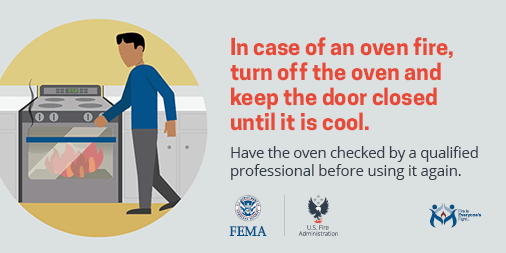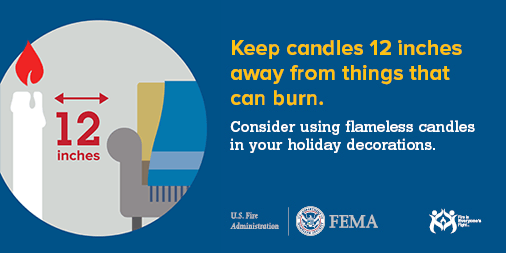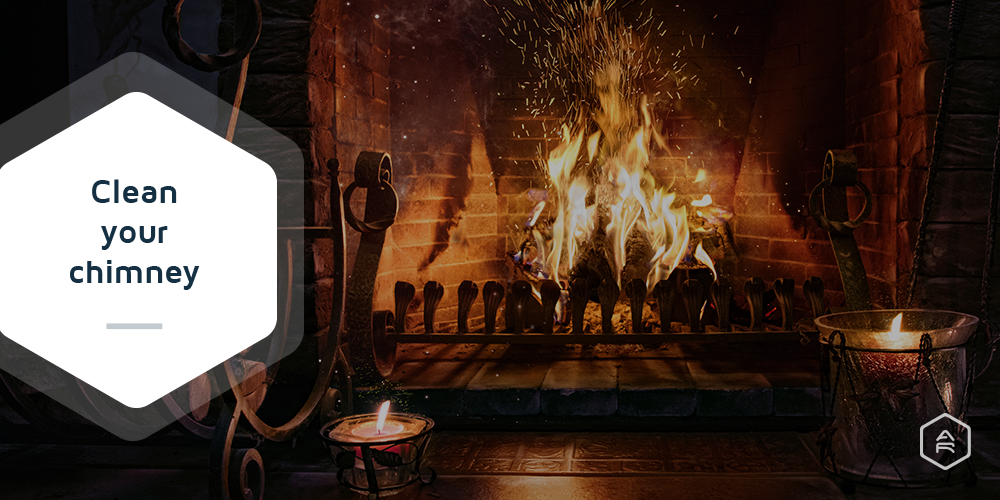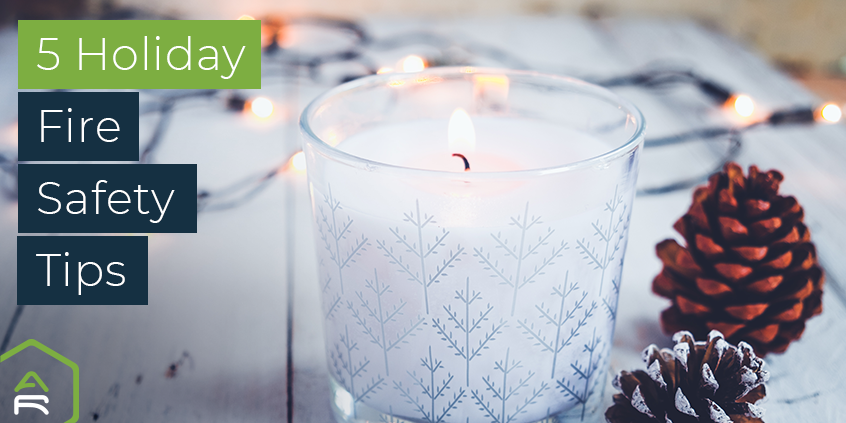As the seasons change and the end of the year quickly approaches, nothing compares to being home for the holidays. Between attending parties and hosting guests, the holidays are a time for friends, family, and celebration. While the spirit of the season tends to bring joy and happiness, unfortunately with the additional cooking and décor that comes with the season also comes an increased risk of home fires. According to the Red Cross, holiday fires claim more than 500 lives and destroy more than $554 million in property every year. As you start to decorate and prepare for the festivities, follow these tips so you can reduce the risk of a fire in your home this holiday season.

Source: National Fire Protection Association
1. Prevent Holiday Cooking Mishaps
Thanksgiving, Christmas, and Christmas Eve are peak days for home cooking fires. Avoid having your holiday meal end up in flames by following these kitchen fire safety tips.
- Keep anything that is flammable, such as oven mitts, towels, or curtains, away from the stovetop at all times.
- Avoid spills that can lead to fires by turning pot handles toward the stove to prevent anyone from bumping into them.
- Check your food frequently when you are simmering, baking, or roasting.
- If you plan to fry, grill or broil anything, stay in the kitchen while it cooks to ensure the food does not burn or ignite a flame.
- When using a grill or turkey fryer, be sure to only use them outside. Always place turkey fryers on concrete or asphalt – never use them in a garage or on a wooden deck.
If a fire does occur, know how to extinguish it properly. For grease fires, you want to smother the flame – do not try to extinguish with water. If the fire is in the oven, turn off the oven and keep the door closed until it cools down.

2. Safely Hang Holiday Lights
During the holiday season, many people will decorate their house with strands of lights. When buying string lights consider purchasing LED strands which produce almost no heat and greatly reduce the risk of fire (along with lowering any energy bill emergencies as LED lights use far less electricity).
Once you have chosen which lights you want to use, or pulled your tried-and-true lights down from your attic, inspect the lights before hanging, even if the strand is new. If the bulbs are cracked or broken ensure you can replace them. If the wires are frayed or pinched, throw the strand away immediately – saving a few dollars on using old lights isn’t worth the catastrophe a fire may bring. Also, make sure you are using the lights the way they are intended – only use indoor lights inside and outdoor lights outside. Once your lights are hung, avoid overloading your electrical outlets by not linking more than three strands of lights together. Finally, do not leave lights turned on for prolonged periods of time. Use smart plugs to easily switch on and off devices plugged into the outlet, or use a light timer so that your lights go on and turn off at the same time every night.

3. Avoid Fires Started by Candles
Two out of five home decoration fires are started by candles. Avoid this from happening to you by keeping candles at least 12-inches away from anything that is flammable or that could burn. Place candles in stable holders and sturdy surfaces so they cannot be knocked down easily. As a safer option, consider using battery-operated flameless candles, which can look, smell, and feel like real candles without the risk of fire.

4. Practice Christmas Tree Fire Safety
Christmas tree fires are extremely common during December and January as well as extremely deadly. One of every 34 reported home Christmas tree fires resulted in a death between 2000-2014. As a potentially safer alternative, artificial trees may greatly reduce the risk of fire and can be used year after year. If you plan to have a real tree, take precautions to reduce the risk of fire by following these Christmas tree safety tips:
- Place your tree somewhere that is not blocking any exits and is at least three-feet away from any type of heat source, such as a radiator, heat vent or fireplace.
- Secure your tree so that it will not fall if accidentally bumped.
- Water your tree every day to prevent it from drying out and increasing the risk of it catching fire.
- When the tree does dry out, dispose of it right away.

5. Prepare Fireplaces for Use
If you have a wood burning fireplace in your home, it is important to have it inspected and cleaned regularly. If you have a gas fireplace, clean and remove any dust or debris that might have collected on the logs since the last use. No matter which kind of fireplace you have, always hang decorations a safe distance from the flame. Anything flammable, such as trees, presents, or pieces furniture should be least three-feet away from the fire.



